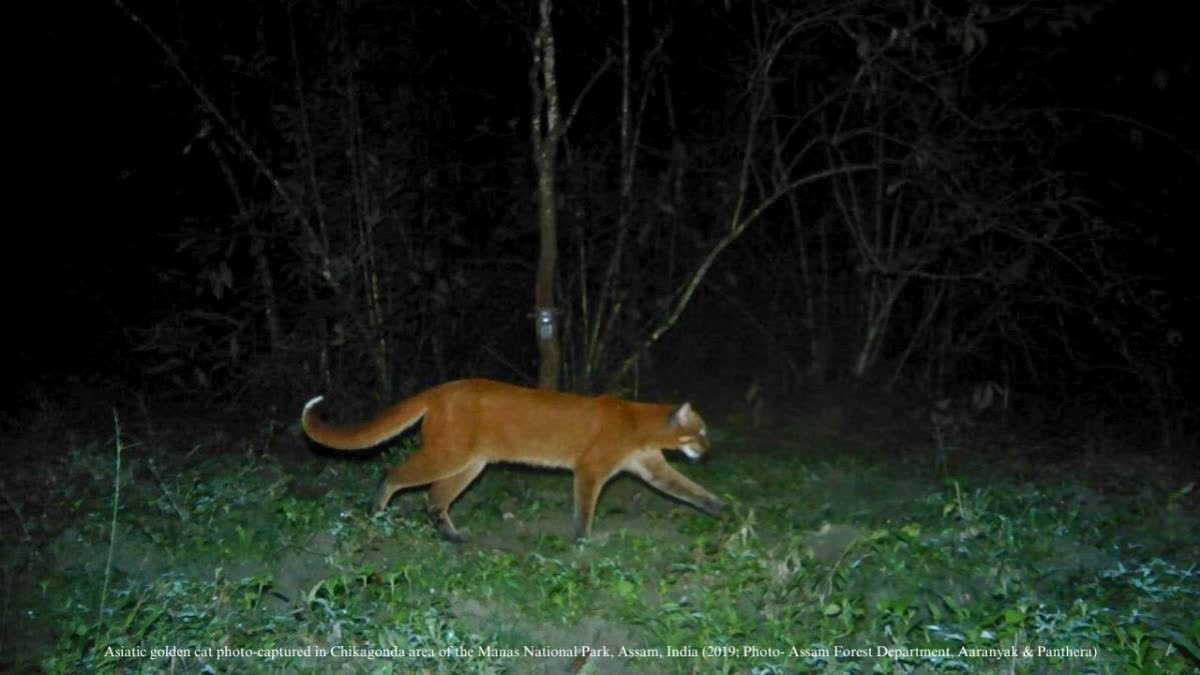Guwahati: A group of scientists and conservationists reconfirmed the existence of the Asiatic golden cat (Catopuma temminckii) in the Manas National Park of Assam. The Asiatic golden cat is a medium-sized felid with a distribution range spanning the northeastern Indian subcontinent, Southeast Asia and southern China. The International Union for Conservation of Nature (IUCN) has listed the species as 'Near Threatened' in the IUCN Red List and it is protected under Scheduled-I of India’s Wildlife (Protection) Act, 1972.
Scientist from Aaranyak, Dr M Firoz Ahmed said this on Tuesday while adding that the reconfirmed the existence of the species was done by a team of experts from the Assam Forest Department, conservationists from Aaranyak as well as several other conservationists from different parts of India.
Even though the species is expected to occur in the region based on a direct sighting made in 2007, an intensive annual systematic camera trapping effort of 39,700 trap days over eight years between 2011 and 2018 yielded no records, he said adding that the finding of this research was published in the summer 2024 edition of ‘CATNews’ of the IUCN Species Survival Commission, one of the five components of the Species Survival Commission of the IUCN.
Dr M Firoz Ahmed, one of the lead authors of the paper, said that two photographic captures of the species were made in December 2019 and January 2021, following the camera trapping efforts of Assam Forest Department, Aaranyak and Panthera--reconfirming its presence in the park following the end of the ethnopolitical conflict in Manas National Park.
It may be mentioned here that Asiatic golden cat is known to occur across a wide range of habitats, including dry deciduous forests, subtropical evergreen forests, tropical rainforests, temperate and sub-alpine forests and at elevations ranging from 0 m to 3,738 m.
In North-east India, the species is recorded from Khangchendzonga Biosphere Reserve of Sikkim, Buxa Tiger Reserve of north-Bengal, Nongkhyllem Wildlife Sanctuary, East Garo Hills, South Garo Hills and Jaintia Hills of Meghalaya, Dampha Tiger Reserve of Mizoram, Namdapha Tiger Reserve, Kamlang Tiger Reserve, Debang Valley, Pakke Tiger Reserve, Eaglenest Wildlife Sanctuary, Singchung-BugunVCR and Talle-Valley Wildlife Sanctuary of Arunachal Pradesh, Intanki National Park of Nagaland and others.
The species is also recorded in many protected areas in Bhutan, the experts said. Apart from Aaranyak scientist Ahmed, senior conservation biologist Dr Dipankar Lahkar, along with conservationists Amal Chandra Sarmah, Dr Ramie H Begum, Aprajita Singh, Nibir Medhi, Nitul Kalita, Sunit Kumar Das and Dr Abishek Harihar contributed.



